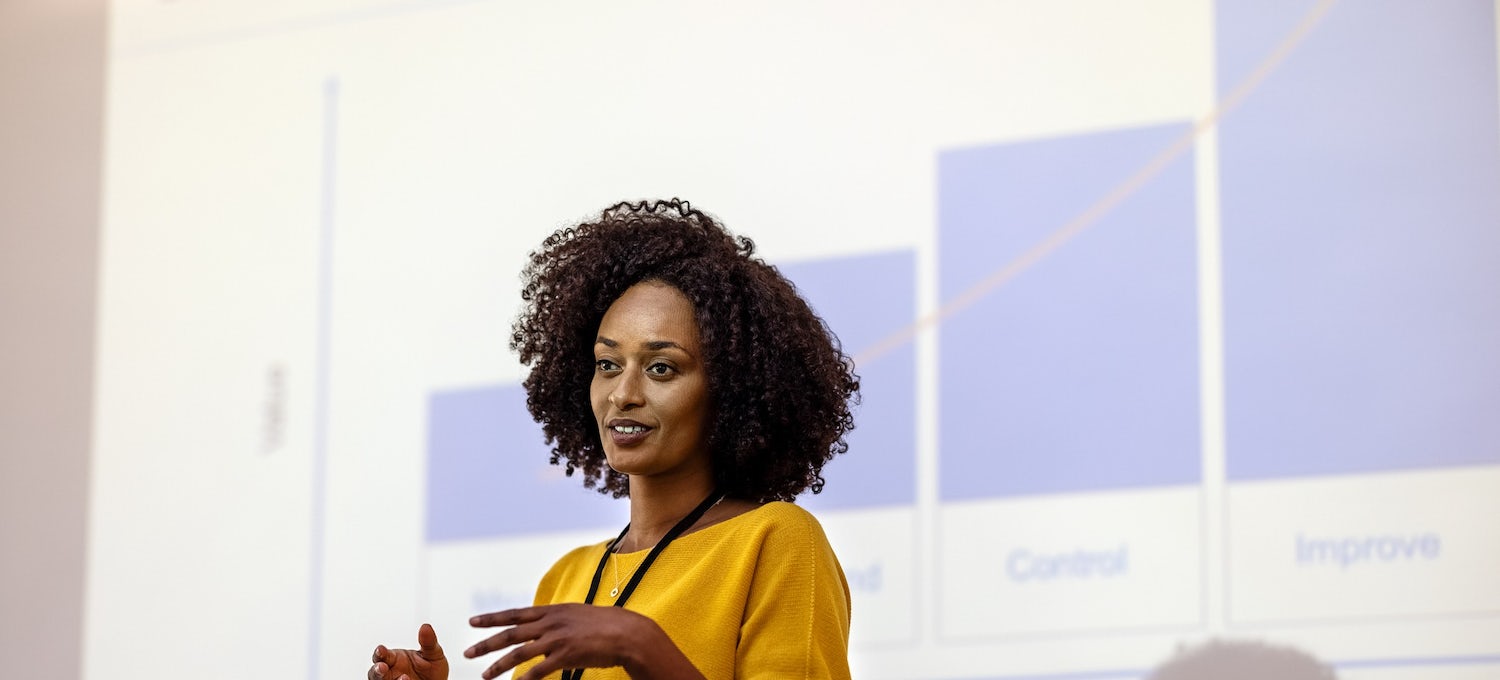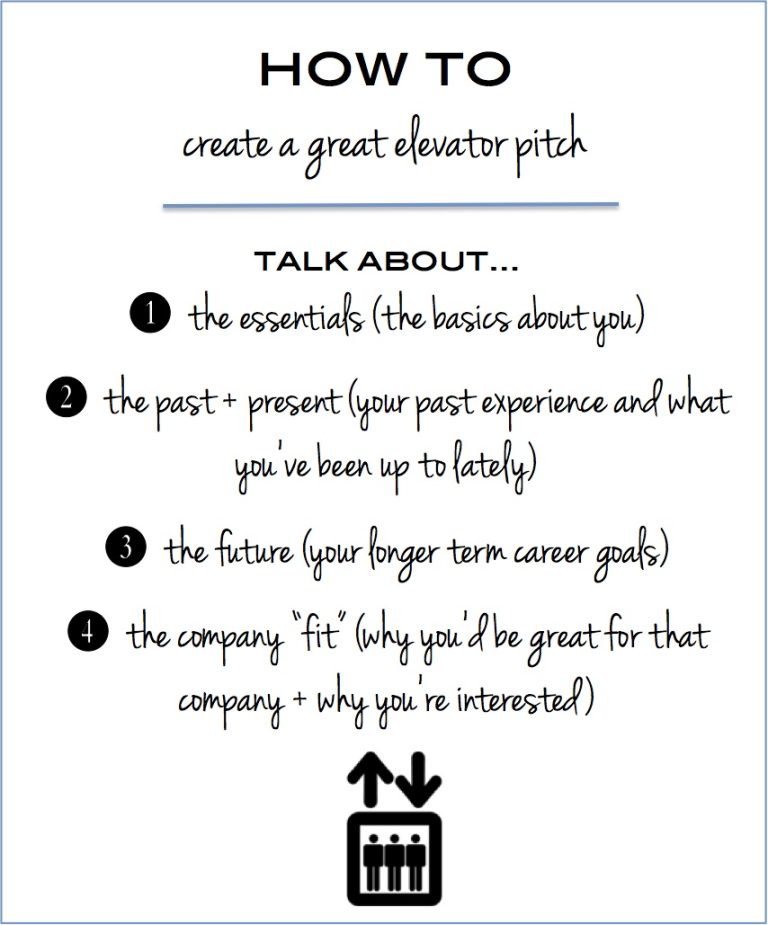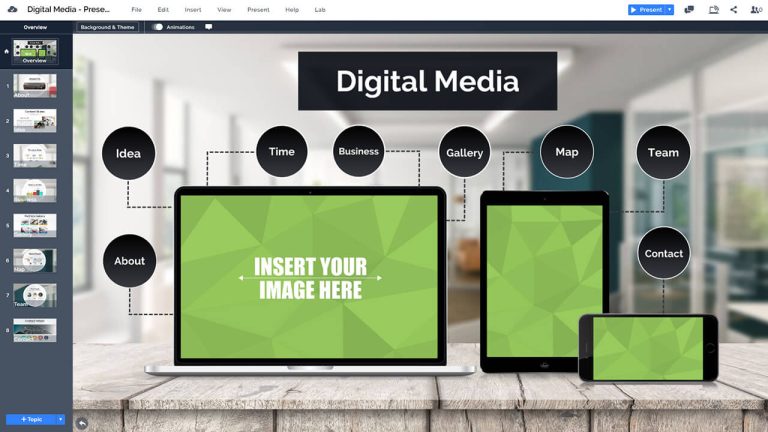How to Improve Presentation Skills?
To improve presentation skills, focus on understanding the purpose of the presentation and use visual aids to support your message effectively. By preparing thoroughly and engaging the audience, you can deliver a compelling and impactful presentation that leaves a lasting impression.
With practice and appropriate dress, you can boost your confidence and connect with your audience on a personal level. Additionally, incorporating personal stories and making eye contact can help create a memorable experience. Furthermore, using the stage to your advantage and staying calm under pressure can enhance your overall presentation skills.
By following these tips, you can become a great presenter and communicate your ideas effectively.
Understand The Purpose Of Your Presentation
Understanding the purpose of your presentation is crucial for improving your presentation skills. By clearly defining your objectives and tailoring your content accordingly, you can effectively engage your audience and deliver a compelling message.
Define Your Objective:
- Clearly define the purpose of your presentation: Before you start crafting your presentation, it’s crucial to have a clear objective in mind. Ask yourself what you want to achieve with your presentation. Are you trying to inform, persuade, or entertain your audience? Defining your objective will give you clarity and direction throughout the presentation creation process.
Identify Your Target Audience:
- Determine who your audience is: Knowing your target audience is essential for creating a presentation that effectively engages and resonates with them. Consider their age, interests, education level, and any other relevant factors. Understanding your audience will help you tailor your content, tone, and delivery to meet their needs and expectations.
Determine The Desired Outcome:
- Set specific goals for your presentation: It’s crucial to determine what you want your audience to take away from your presentation. Do you want them to learn something new, change their perspective, or take a specific action? By defining the desired outcome, you can structure your presentation and focus on delivering key messages to achieve your goals.
Remember, understanding the purpose of your presentation involves defining your objective, identifying your target audience, and determining the desired outcome. These three elements will guide you in creating a presentation that is impactful, relevant, and engaging for your audience.
Prepare And Organize Your Content
Improve your presentation skills by preparing and organizing your content effectively. Avoid overused words and phrases, keep sentences brief, and use a variety of expressions to engage your audience. Practice and incorporate visual aids for a compelling and impactful presentation.
Research And Gather Relevant Information:
- Conduct thorough research on the topic of your presentation to ensure that you have a strong grasp of the subject matter.
- Gather relevant and reliable resources such as books, articles, and reputable websites to support your content.
- Take note of important statistics, facts, and examples that can add credibility and substance to your presentation.
- Consider the needs and interests of your audience when selecting information to include in your presentation.
Create A Clear And Logical Structure:
- Start by outlining the main points or key messages you want to convey in your presentation.
- Organize your content in a logical order that flows smoothly from one idea to the next.
- Use headings, subheadings, and bullet points to break down complex information into easily digestible chunks.
- Ensure that each section of your presentation builds upon the previous one and leads naturally into the next.
Develop A Compelling
- Begin your presentation with a captivating opening that grabs the attention of your audience.
- Clearly state the purpose and objectives of your presentation to set the expectations early on.
- Consider using a thought-provoking question, an interesting fact, or a relevant anecdote to engage your audience from the start.
- Provide a brief overview of what will be covered in your presentation to give your audience a roadmap of what to expect.
Craft A Concise
- Summarize the main points of your presentation, reinforcing the key messages you want your audience to remember.
- End your presentation on a strong note by leaving your audience with a memorable takeaway or call to action.
- Avoid introducing new information or going off-topic in your conclusion; instead, reiterate the main ideas you have covered.
- Use closing remarks that leave a lasting impression and inspire your audience to reflect on the content you have presented.
Remember, effective preparation and organization are essential for delivering a successful presentation. By conducting thorough research, creating a clear structure, and developing engaging introductions and conclusions, you can improve your presentation skills and captivate your audience.
Create Impactful Visual Aids
Improve your presentation skills by creating impactful visual aids. Enhance your message and engage your audience by incorporating visually appealing slides, graphs, and videos that support and reinforce your key points. By utilizing effective visual aids, you can effectively communicate your ideas and leave a lasting impact on your audience.
Visual aids play a crucial role in improving presentation skills. They help to engage the audience, enhance understanding, and make your content more memorable. Here are some tips to create impactful visual aids:
- Use visuals to support key points:
- Incorporate charts, graphs, and diagrams that highlight important data and statistics.
- Utilize images and illustrations that visually depict your ideas and concepts.
- Include videos or animations to demonstrate complex processes or concepts.
- Choose appropriate graphics and images:
- Ensure that the visuals you select align with your message and are relevant to your audience.
- Opt for high-quality images and graphics that are clear and visually appealing.
- Use consistent themes and styles to maintain a cohesive look throughout your presentation.
- Ensure readability and visual appeal:
- Use fonts that are easy to read, preferably sans-serif fonts like Arial or Calibri.
- Keep the text on your visuals concise and legible, using bullet points or short phrases.
- Use contrasting colors to make text and visuals stand out and improve readability.
- Avoid overcrowding your visuals with too much information; maintain a clean and organized layout.
Remember, the goal is to make your visual aids support your key points and enhance the overall impact of your presentation. By following these guidelines, you can create visually appealing and effective visual aids that leave a lasting impression on your audience.
Practice Your Delivery
Improve your presentation skills by practicing your delivery. Refine your speaking style and enhance your message by regularly rehearsing and fine-tuning your presentation techniques.
:
Practicing your presentation multiple times allows you to become more comfortable with the content and improve your overall delivery. Here are some tips to help you rehearse effectively:
- Rehearse your presentation multiple times: Practice makes perfect! Dedicate time to rehearse your presentation multiple times before the actual event. This will help you become familiar with the content, flow, and timing of your presentation.
- Pay attention to your body language and gestures: Your body language and gestures play a crucial role in how your presentation is perceived. Practice your posture, gestures, and facial expressions to convey confidence and engagement. Stand tall, make eye contact, and use appropriate hand gestures to enhance your message.
- Use vocal techniques to enhance your delivery: Your voice is a powerful tool in capturing your audience’s attention. Experiment with your tone, pitch, and volume to add emphasis and keep your audience engaged. Vary your pace and pause strategically to create impact and allow your audience to absorb important information.
Remember, the more you practice your delivery, the more confident and polished you will become. Make use of feedback from peers or record yourself to identify areas of improvement. Practice not only helps you deliver your presentation effectively but also boosts your overall confidence.
Engage And Connect With Your Audience
Improve your presentation skills by engaging and connecting with your audience. Understand the purpose of your presentation, use visual aids, practice your delivery, and make eye contact to deliver a compelling and effective message.
Establish rapport and build trust:
- Begin your presentation with a warm and genuine greeting to create a positive atmosphere.
- Share a personal story or anecdote to connect with your audience on a deeper level.
- Make eye contact with individuals throughout your presentation to establish trust and engage them.
Encourage audience participation:
- Incorporate interactive elements such as polls or small group discussions to keep the audience engaged.
- Use open-ended questions to encourage audience members to share their thoughts and experiences.
- Incorporate interactive technologies such as live polling apps or audience response systems to facilitate active participation.
Answer questions effectively:
- Listen attentively to each question and provide a concise and clear response.
- Repeat the question to ensure everyone in the audience hears it.
- Use visual aids such as slides or props to enhance your answer and engage the audience.
Remember, engaging and connecting with your audience is crucial for a successful presentation. Establish rapport, encourage participation, and answer questions effectively to create a memorable and impactful experience for your audience.

Credit: www.chrysos.org.uk
Overcome Nervousness And Build Confidence
Learn how to improve your presentation skills and overcome nervousness to build confidence. Gain valuable insights and practical tips from experts in the field to help you deliver impactful presentations with ease and success.
Manage Anxiety Through Relaxation Techniques:
- Deep breathing: Take slow, deep breaths to calm your nerves and reduce anxiety before a presentation.
- Progressive muscle relaxation: Relax your body by tensing and releasing each muscle group, starting from your toes and working your way up to your head.
- Visualization: Imagine yourself delivering a successful presentation, feeling confident and engaging with your audience.
- Meditation: Practice mindfulness meditation to focus your mind, reduce stress, and increase your overall sense of calm.
- Yoga: Incorporate gentle yoga poses and stretches into your routine to relax your body and mind.
Visualize Success And Positive Outcomes:
- Create a mental image of yourself giving a flawless presentation and receiving positive feedback from your audience.
- Use positive affirmations to build confidence and visualize achieving your presentation goals.
- Visualize overcoming any challenges or obstacles that may arise during your presentation.
- Remind yourself of past successful presentations and use them as motivation for future ones.
- Focus on the positive aspects of your presentation, such as the opportunity to share valuable information and engage with your audience.
Embrace Constructive Feedback For Improvement:
- Request feedback from trusted colleagues, mentors, or supervisors after each presentation.
- Listen actively and non-defensively to feedback, taking note of areas for improvement.
- Reflect on the feedback received and identify specific actions you can take to enhance your presentation skills.
- Practice incorporating feedback into your future presentations to continually improve.
- View constructive feedback as a valuable learning opportunity rather than a criticism of your abilities.
Analyze And Evaluate Your Presentations
Analyze and evaluate your presentations to improve your presentation skills. Gain insights into your strengths and areas for improvement, refine your message, and engage your audience effectively.
Assess Your Strengths And Areas For Improvement:
- Take a moment to reflect on your previous presentations and evaluate your performance.
- Identify your strengths, such as effective communication, engaging storytelling, or confident delivery.
- Recognize areas for improvement, such as managing nerves, organizing content more effectively, or using visual aids strategically.
- Analyze the feedback you received from your audience or colleagues to gain insights into areas that need enhancement.
Seek Feedback From Trusted Sources:
- Share your presentations with trusted individuals who can provide objective feedback.
- Ask for constructive criticism on your content, delivery style, body language, and overall impact.
- Consider seeking feedback from a mentor, manager, or experienced presenter who can offer valuable insights.
- Actively listen to feedback and use it as a tool for growth and development.
Continuously Learn And Refine Your Skills:
- Stay updated on the latest presentation techniques and trends by reading books, attending workshops, or taking online courses.
- Explore different presentation styles and methods to find what works best for you.
- Practice regularly to build confidence and improve your delivery.
- Seek opportunities to present in various settings, such as team meetings, conferences, or public speaking events.
- Reflect on each presentation and identify areas for refinement, whether it’s adjusting your body language, enhancing your storytelling ability, or improving slide design.
Remember, improving your presentation skills is a continuous process. By assessing your strengths and areas for improvement, seeking feedback from trusted sources, and continuously learning and refining your skills, you can become a more confident and effective presenter.
Access Additional Resources And Training
Access additional resources and training to enhance your presentation skills. Discover techniques, tips, and strategies from experts through online courses, articles, and videos to improve your ability to deliver impactful and compelling presentations.
Explore Online Courses And Tutorials:
- Taking online courses or tutorials can be a great way to improve your presentation skills at your own pace and convenience. Consider the following options:
- Coursera: Coursera offers a variety of online courses on presentation skills, such as “Effective Communication: Writing, Design, and Presentation” and “Successful Presentation.” These courses provide valuable insights into creating engaging content, delivering impactful presentations, and overcoming public speaking anxiety.
- Udemy: Udemy offers numerous presentation skills courses, including “The Complete Presentation and Public Speaking/Speech Course” and “Presentation Skills: Give an Amazing Public Speaking Speech.” These courses cover essential topics like structuring presentations, using visual aids effectively, and engaging with the audience.
- LinkedIn Learning: LinkedIn Learning provides access to a wide range of presentation skills courses, such as “Presentation Fundamentals” and “Delivering Engaging Presentations.” These courses focus on improving communication skills, creating persuasive presentations, and mastering body language.
- YouTube tutorials: YouTube is a valuable resource for finding free presentations skills tutorials. Channels like Brian Tracy and Philip VanDusen offer informative and practical tips to enhance your presentation abilities.
Attend Workshops Or Seminars On Presentation Skills:
- Attending workshops or seminars dedicated to presentation skills can provide hands-on experience and valuable feedback. Consider the following options:
- Toastmasters International: Toastmasters is a non-profit organization that offers public speaking clubs worldwide. Joining a local Toastmasters club allows you to practice public speaking, receive constructive evaluations, and learn from experienced speakers.
- Professional development workshops: Many organizations and institutions offer workshops or seminars on presentation skills. Look out for opportunities to attend these events, as they often focus on specific aspects of presentations, such as storytelling, slide design, or speech delivery.
- In-house training programs: Some companies or universities organize in-house training programs on presentation skills. These programs are tailored to specific needs and can provide valuable insights into effective communication within your industry or field.
Join Public Speaking Groups Or Clubs:
- Becoming a member of public speaking groups or clubs can provide ample opportunities to practice and improve your presentation skills. Consider the following options:
- Toastmasters International: Toastmasters is a globally recognized organization dedicated to helping members improve their communication and leadership skills. By joining a local Toastmasters club, you can participate in regular meetings, deliver prepared speeches, and engage in impromptu speaking exercises.
- Meetup groups: Meetup is a platform where people with similar interests can connect and organize events. Look for public speaking or presentation skills-focused Meetup groups in your area. Attending these meetings can offer networking opportunities and chances to practice speaking in front of a supportive audience.
- Professional associations: Many professional associations have specialized groups or committees focused on presentation skills. These groups often organize events, workshops, or conferences tailored to professionals within a specific industry. Participating in these events can help you learn from experts and gain insights into effective presentations within your field.
Remember, improving presentation skills requires consistent practice and dedication. Exploring online courses, attending workshops or seminars, and joining public speaking groups can provide you with valuable resources, support, and opportunities to refine your abilities.
Frequently Asked Questions For How To Improve Presentation Skills?
How Can I Improve My Public Presentation Skills?
To improve public presentation skills, follow these tips: 1. Know your audience 2. Practice regularly 3. Seek and use feedback 4. Add your personal touch 5. Share a personal story 6. Maintain eye contact 7. Utilize the stage effectively 8. Stay calm and composed.
What Are 10 Qualities Of A Good Presentation?
A good presentation should have the following qualities: 1. Clear and concise message delivery. 2. Engaging and captivating storytelling. 3. Well-organized structure with logical flow. 4. Effective use of visuals and multimedia. 5. Strong verbal and non-verbal communication skills. 6. Connection with the audience and active engagement.
7. Adaptability and flexibility to address diverse audience needs. 8. Confidence and enthusiasm in presentation delivery. 9. Proper time management and adherence to allotted time. 10. Preparation and practice to ensure a polished and professional presentation.
What Are The Four P’S Of Presentation?
The four P’s of presentation are: 1. Purpose: Clearly define the objective or goal of your presentation in a concise manner. 2. Preparation: Plan and organize your content, visuals, and delivery to ensure a smooth and engaging presentation. 3. Practice: Rehearse your presentation to become comfortable with the material and deliver it confidently.
4. Performance: Present with energy and enthusiasm, engage with your audience, and effectively communicate your message.
What Are The Five Presentation Skills To Develop?
To develop presentation skills, focus on these five essential areas: 1. Clarity: Ensure your message is concise and easy to understand. 2. Confidence: Build self-assurance to deliver your presentation effectively. 3. Engagement: Capture your audience’s attention and maintain their interest. 4.
Visual aids: Utilize visuals to enhance your presentation and support your message. 5. Practice: Rehearse your presentation to improve delivery and reduce nervousness. By mastering these skills, you can become a more effective presenter and communicate your ideas with impact.
Conclusion
Improving presentation skills is essential for anyone looking to succeed in their professional or academic endeavors. By implementing certain strategies, individuals can enhance their ability to deliver effective and engaging presentations. Firstly, it’s crucial to understand the purpose of the presentation and tailor it to the intended audience.
Preparing thoroughly and utilizing visual aids can also make a significant impact. Additionally, practicing the presentation and dressing appropriately can boost confidence levels. Engaging the audience and incorporating personal stories can create a more compelling experience. Lastly, being aware of body language, making eye contact, and using the stage effectively can further enhance the presentation’s impact.
By consistently practicing and incorporating these techniques, individuals can become skilled presenters capable of effectively conveying their message. So, start implementing these tips today and watch your presentation skills soar to new heights.






